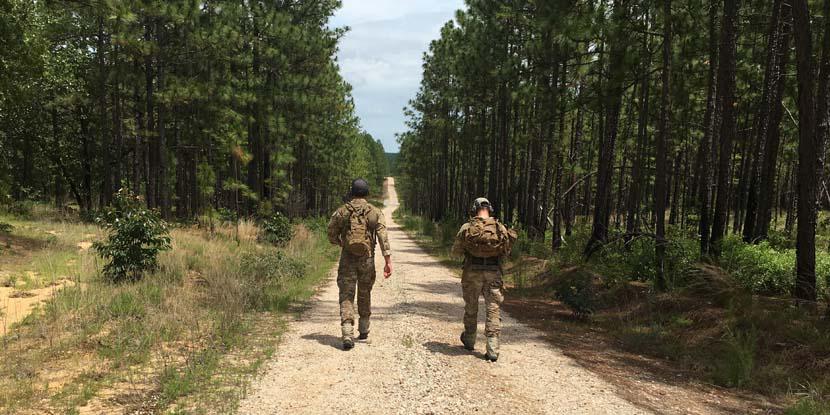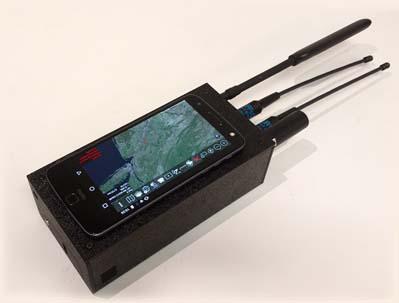New Technology Aims to Avoid GPS Jamming Threats
The military is developing a new battlefield tool that will help ground forces navigate hostile territory without the susceptibility of GPS platforms. Instead, warfighters will use radio frequency signals as a source of positioning information. To display navigational solutions on a map, the tool connects to a smartphone running the Air Force’s Android Tactical Assault Kit.
In conjunction with the Air Force Research Laboratory (AFRL), Sterling, Virginia-based Echo Ridge LLC is designing the technology to fit in a small, low-power package that can be carried by ground operators, according to Mark Smearcheck, an electronics engineer with the AFRL Sensors Directorate.
The company created an algorithm to aggregate signals of opportunity from various radio frequency sources and then worked to provide a complementary, backup source of positioning, navigation and timing. The algorithm is used to determine a position based on the time difference of arrival of those signals, which do not operate on the same frequency as GPS.
“We’re measuring signals that have known or discovered geographical locations,” said John Carlson, chief technical officer at Echo Ridge. “Because we’re able to precisely measure those signals, we can accurately estimate position without error growth over time or distance traveled.”
Echo Ridge and the AFRL Sensors Directorate recently completed a field test of a prototype of the device at Fort Bragg, North Carolina.
Although GPS has revolutionized warfighting by providing unrivaled positioning and navigation capabilities, many military platforms have become overly dependent on it, making GPS signals a prime target for enemies, the Air Force explained.
“Adversaries use GPS jammers to disrupt allied operations as well as to protect themselves from attack by aircraft-launched precision weapons,” said Joseph Cogliano, spokesman for the Air Force’s Small Business Innovation Research and Small Business Technology Transfer (SBIR/STTR) Program Management Office at Wright Patterson Air Force Base in Ohio. “These jammers deny access to the GPS signal for our ground forces in the region, making it difficult to navigate.”
Following the initial success of the field test, Echo Ridge will work to improve the technology’s usability and address ruggedness issues to prepare the device for wider use in the field. Funding from the AFRL’s Center for Rapid Innovation, known as the SBIR/STTR Program’s Direct-to-Phase II, allowed Echo Ridge to develop the laboratory concept into the prototype device and beyond






Comments